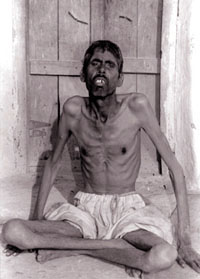Life positive

the theme of the World Health Organization's (who) annual report the World Health Report (WHR) 1997, confronts chronic conditions like cancer, mental disorders, metabolic and hormonal imbalances, musculo-skeletal conditions - most of them preventable, but not easily curable. In view of the fact that in the last decades of this century life expectancy has gone up considerably, the WHR notes, "...in celebrating our extra years, we must recognise that increased longevity without quality of life is an empty prize."
Says who director general Hiroshi Nakajima, "Countries, particularly in the developing world, can no longer afford to deal with the two challenges of infectious and chronic diseases sequentially, as in the past. They must address them simultaneously."Average life expectancy in the developing world is now 64 years, and it is projected to reach 71 by ad 2001. In many industrialised countries like Japan, the figure has already touched 80 years.
The number of the above-65 year-olds has increased to 380 million, accounting for seven per cent of the total global population of 5.8 billion in 1996. In the first half of the 1990s, the number of the above-65-year-olds has increased by 17 per cent in the developing world and 11 per cent in the least developed countries, but only 10 per cent in the developed world, notes the WHR.
who points out that this increase in lifespan marks an important landmark in human evolution. Simultaneously, this achievement should be projected much more meaningfully by making the additional years free from poverty, suffering and disability. Even as infectious diseases have come well under control in the developed world, it is the non-infectious diseases that now pose great threat to the health of the global populace, says who.
Globally, chronic diseases cause 25 million or so deaths every year. Among adults, the leading causes are circulatory diseases including heart diseases, which kill more than 15 million people. Cancer toll is 6 million, while chronic obstructive pulmonary disease cause about 3 million deaths. There are a host of other debilitating diseases too. For instance, about 29 million people live with dementia.
In developing countries, with the increase in life expectancy, the possibility of people getting prone to old-age diseases has also increased. Although the majority of chronic diseases cannot be cured, careful health practices can delay their onset. The WHR notes that in the present times, premature mortality and disability from chronic diseases are becoming common.
Lifestyle changes - voluntary and otherwise - seem to be playing an important role in all this. Factors like smoking, heavy alcohol consumption, inappropriate diet and inadequate exercise are some of them. Besides, there are other causes like poverty, poor maternal health, undernutrition during infancy, genetic predisposition, dangerous or stressful working conditions and environmental pollution.
Occupational injuries affect more than 120 million people and cause at least 200,000 deaths annually. Upto 350 different substances have been identified as occupational carcinogens. Estimates suggest that there are upto 160 million annual cases of occupational diseases, of which 30-40 per cent may lead to chronic disease and 10 per cent to permanent work disability. Physical factors like noise, vibration, radiation and micro-climatic conditions affect upto 40 per cent of the workforce in industrialised countries and 80 per cent in the developing world.
In the developing countries, 50-70 per cent of the workforce maybe exposed to a heavy physical workload that can lead to the damage of the cardiorespiratory or musculoskeletal systems and traumatic injuries. Recent surveys also show people getting increasingly exposed to psychological stress and overload at work, particularly in industrialised countries. These often go unnoticed as 'silent epidemics'.
Related Content
- Child well-being in an unpredictable world
- Action taken report by District Magistrate Chamoli regarding Benital lake, Chamoli, Uttarakhand, 26/02/2024
- Order of the National Green Tribunal regarding the state of waterbodies in Gurugram, Haryana, 03/08/2023
- Sanitation and hygiene for all: 'make a splash!' partnership progress report 2022-2023
- Report of the Kerala State Pollution Control Board on KMML polluting land and waterbodies through the discharge of acid water, Chavara, Kollam, Kerala, 07/02/2023
- Optimizing brain health across the life course
